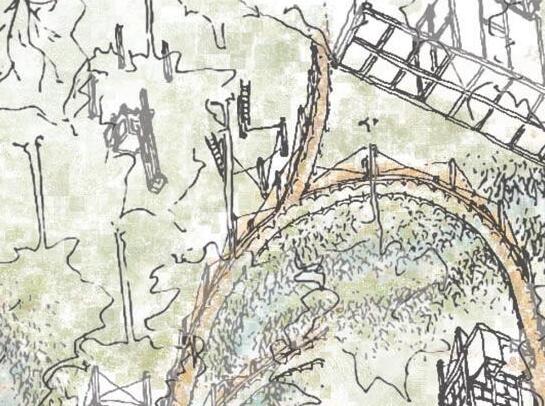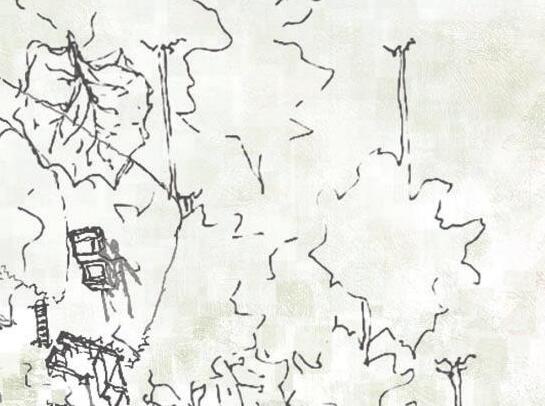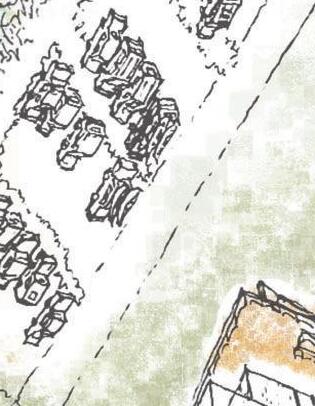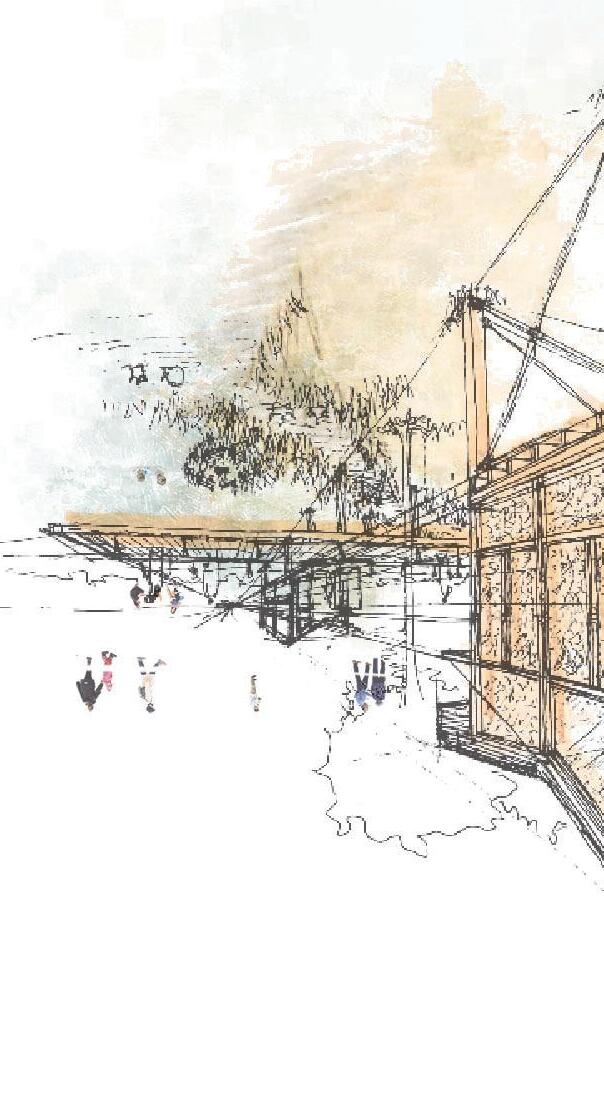
3 minute read
Reciprocity
Nautica Edge, Micah Holdsworth Architetcure, Fall 2022
Typha Latifolia (Broad-Leaf Cattail) is a salt marsh weed native to the Chesapeake Bay that, when properly managed, provides both a vital ecological habitat and a valuable building material. The cultivation, harvesting, and processing of cattail as well as construction with it offers an opportunity for a production model of agritourism. As generational tourists and local campers learn to care for the wetland’s health, it provides for them cabins to stay in and a rich ecological experience to learn from. The project was a partnership where all parties contributed design solutions equally. This includes tasks such as idea generating, sketching, rendering, labeling, and project research.
Advertisement
TheNatural Environment






“Collectively, the Indigenous canon of principles and practices that govern the exchange of life for life is known as the Honorable Harvest.“
Braiding Sweetgrass, The Honorable Harvest (p.180).




Agritourism in Cherrystone, Virginia has been the method in which the town operates for generations. With Recreational Vehicles at its core, this current model of tourism fragments the landscape, stifling the very natural wetland systems that facilitate the region’s economy of agritourism and farming. The continuous use of recreational vehicles places a strain on the health and wellness of these salt marsh ecologies due to excess pollution from vehicles and agriculture which —without the proper function of natural wetland systems—results in pollutants entering the Chesapeake Bay. In response to these existing issues, Reciprocity proposes a model of tourism where users experience a full embrace of the natural environments on an indigenous level that not only engages users with the wetlands but indulges them in a system of exchange with the land; as tourists care for the land through them in a system of the land; as tourists care for the land long-term management, it provides a place for them to live.
Issues 2
Native-Invasive Species
/ˈnādiv/ - /inˈvāsiv/ - /ˈspēSHēz,ˈspēsēz/


An invasive species that has been introduced to a particular environment and has lived there for so long that the environment cannot live or function properly without it.
Cattail is an aquatic plant that when overgrown can be detrimental to adjacent ecologies in the environment.

Recreational Vehicles are the primary local method of camping. They place a strain on the land and limits tourists to a fragmented experience of the natural environment.
Opportunity
This native invasive dynamic is an opportunity for people to engage mutualistically with the salt marsh, thinning out the cat-tails annually to keep it at a stable population while benefiting from the harvested raw materials in the production of Typhaboard SIPs (Structural Insulated Panels). With guidance and control, cattail has the potential to be a source that will improve the health and wellbeing of the site and provide tourists with an indigenous experience of the natural environment.
Cabins are pre-fabricated by campers using Typhaboard SIPs made up of hand-harvested and processed cattails stalks. Elevated 8’ off the ground, these cabins allow the environment to flourish undeterred.





Education and Engagement
Site-Sourced Materials
Engage campers in a shared process to construct cabins from materials sourced onsite, namely cattail.
Sense of community
Curate a sense of community through indigenous experiences and activities surrounding the harvesting and processing of cattail.
Wetland Health and Management
Research and Discovery
Improve wetland health through active research and discovery on cattail phytoremediation.
Wetland Health
Develop a wetland using cattail as the primary phytoremediator to enhance wetland health on and surrounding the site.
Building Production
Indiginous practices
Reduce the total amount of energy being used on site by designing all architecture around indiginous practices.
Future Investment
Develop a self-sustaining, adaptable growth model that will lead to an investment in the campsite and surrounding community.
Site Sourced Materials
Re-allocation of Site Elements
Community Involved Harvest of Materials
Immerse campers in the natural environment
Immerse Campers in wetlands
Research and Discovery
Disperse cabins throughout site
Established Wetland
Cattail Phytoremediation
Passive Systems
Minimal Machine Use
Manual Labor and Construction
Produce Cabins yearly
Typhaboard SIP Panel System
A research center was created on the site as a way to conduct research on the health and wellness of the bay and wetlands. This center not only improves bay health but seeks to restore the coastal wetland adjacent to the site.




A board walk weaves throughout the site, integrating each component of the natural cycle. The board walk consists of several ramps that provides ease of access to other areas in the site.

The Ecology Center is the primary point of access into the campsite and to the wetland. Here campers are able to retrieve all supplies for harvesting and immersing themselves into the site. The Wetland is a major component in the site. Being home to a number of phytoremediators, such as cattail, the wetland on the site is a starting point to fully restoring the wetlands along the coast of the Chesapeake Bay.
To limit the amount of architectural strain on the environment, the cabins are constructed on site in an area called the Production Pavilions. In this area, harvested cattail is made into typhaboard panels and used in the construction of the cabins.









The site consisted of dozens of Recreational Vehicles that contributed to the fragmentation of the land and pollutant runoff from the built environment. As a response, all RVs have been removed from the site and replaced with cabins made from cattail that are constructed on site.























